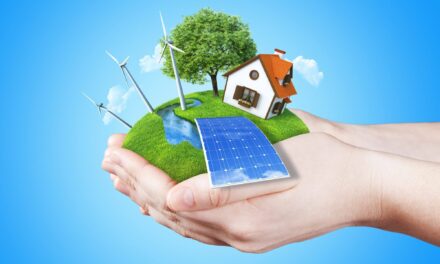
Eco-Friendly Renewable Energy Solutions Guide
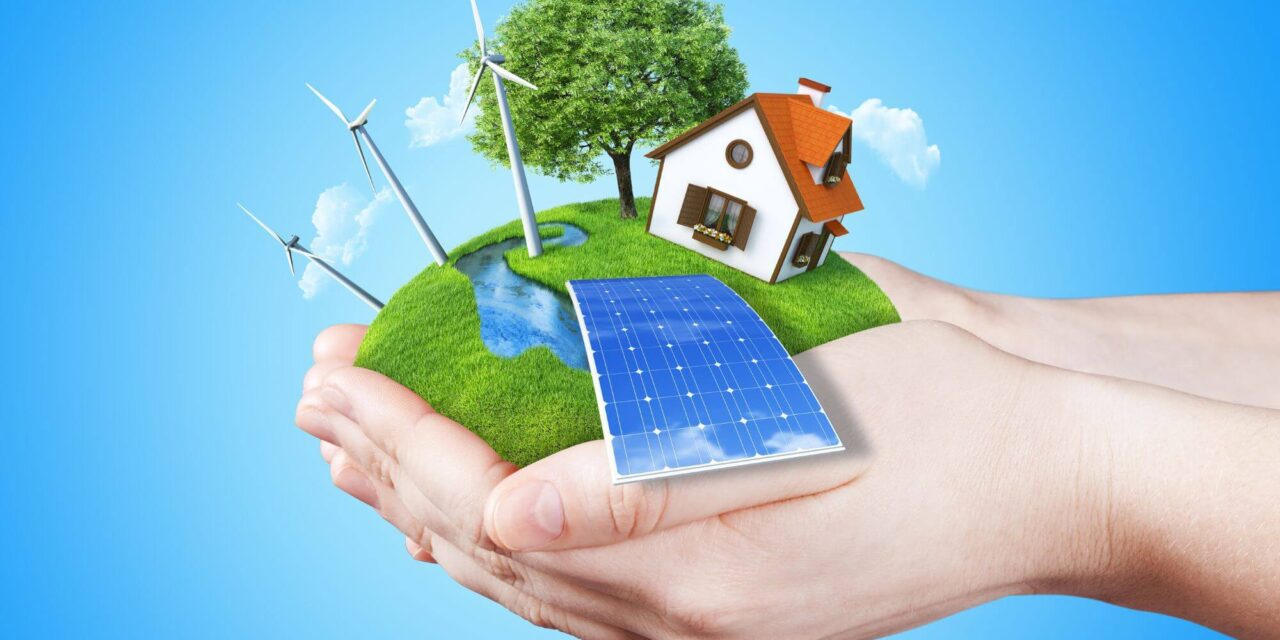
In This Article:
Welcome to my in-depth guide to renewable energy solutions. In this article, I will introduce you to many sorts of renewable energy technologies that are now accessible and discuss how they can help you power your daily lives in a sustainable and eco-friendly way.
Key Takeaways
- Discover cutting-edge renewable energy technologies that provide environmentally friendly methods to power our world.
- Investigate the advantages and applications of various renewable energy systems, such as solar power, wind energy, hydroelectric power, geothermal energy, and bioenergy.
- Learn how to incorporate renewable energy systems into your homes and companies in order to reduce your carbon footprint.
- Understand the environmental and economic benefits of clean and green energy sources.
- Join me in supporting renewable energy alternatives for a greener, cleaner future.
Understanding Renewable Energy Technologies
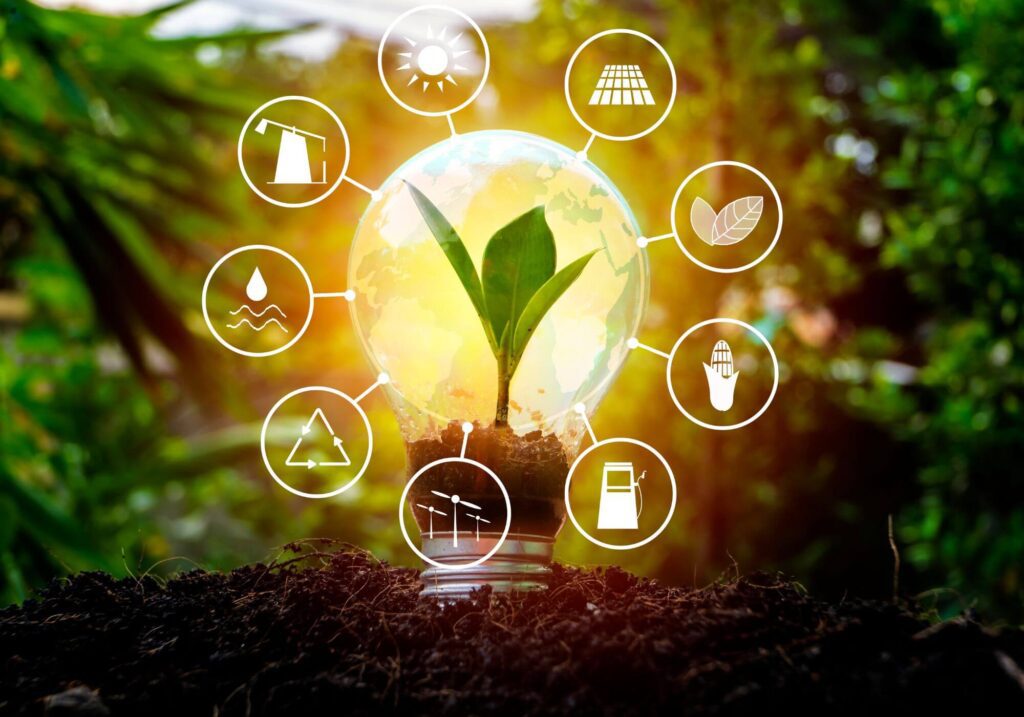
Renewable energy technologies provide an endless supply of clean energy solutions. In this section, we will look at various renewable energy technologies and their uses, highlighting their advantages and disadvantages.
Solar Energy
Solar energy is one of the most widely used renewable energy sources. It uses photovoltaic cells to convert sunlight into electricity to capture the power of the sun. Solar panels are a common sight on many people’s rooftops across the world, but they can also be integrated into structures and utilized in solar farms. Solar power has advanced tremendously in recent years, and it is now a reliable source of renewable energy.
Wind Energy
Another common type of renewable energy alternative is wind turbines. They turn the wind’s kinetic energy into electricity. In places with strong winds, wind energy is a cost-effective solution. Wind turbines are commonly seen in wind farms, and their use has increased significantly in several countries. Wind energy, like solar electricity, has limits, such as the possible environmental damage and the necessity for huge expanses.
Hydroelectric Power
Hydroelectric power generates electricity by harnessing the energy of falling water. It is a dependable and low-cost renewable energy source. Hydroelectric power facilities are often located near dams or major rivers, and their development requires a significant investment. They are, however, a viable choice in places with plentiful water resources and high hydroelectric potential.
Geothermal Energy
Geothermal energy generates electricity by harnessing the Earth’s natural heat. Drilling down the Earth’s surface to obtain hot water and steam, which are then utilized to power turbines, is involved. Although geothermal power facilities are uncommon, they can provide a continuous and dependable source of renewable energy. However, the expense of constructing geothermal plants can be prohibitively expensive.
Using the Sun’s Energy
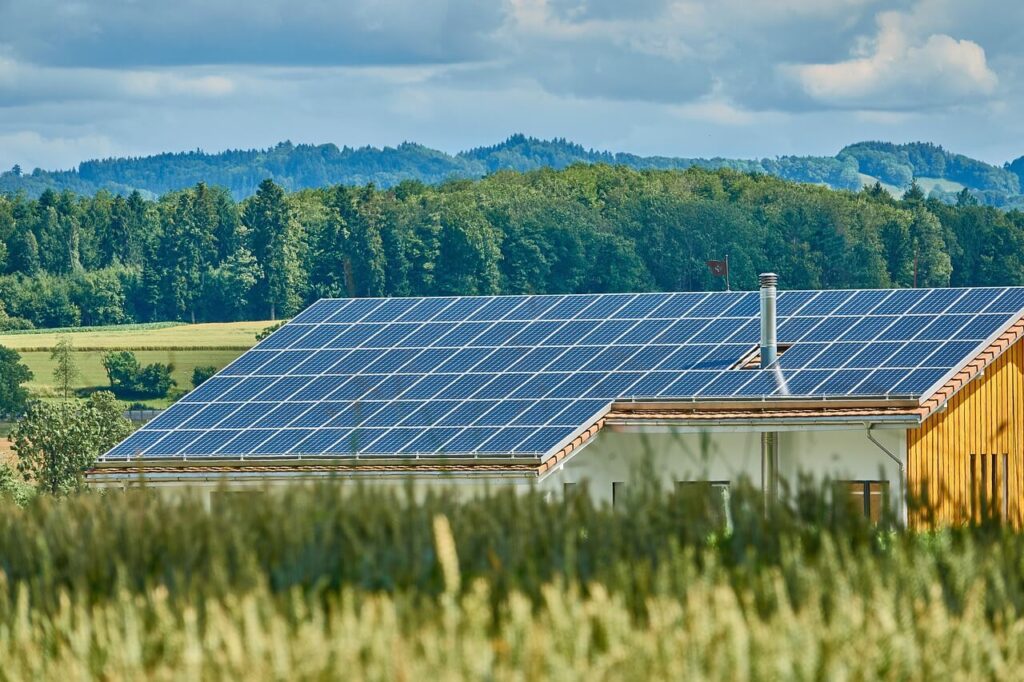
Solar energy is one of the most efficient ways to generate clean electricity. Photovoltaic cells turn sunlight into usable power, providing a sustainable and renewable energy alternative. Solar panels are classified into three types: monocrystalline, polycrystalline, and thin-film. Each panel has distinct properties that influence its efficiency, cost, and applicability for various applications.
Monocrystalline solar panels are the most efficient and costliest choice, as they are constructed from a single, pure silicon crystal. Polycrystalline solar panels are built from several silicon crystals and are slightly less efficient than monocrystalline panels. Thin-film solar panels are the least efficient but also the most affordable and versatile type of solar panel. They are constructed from a thin layer of photovoltaic material applied to a solid or flexible substrate.
Solar energy has the potential to power large towns as well as homes and businesses. Solar panels can be put on the roof or mounted on the ground to integrate solar power into a building. Homeowners and businesses can minimize their dependency on traditional energy sources, lower their energy bills, and lessen their carbon footprint by generating renewable energy on-site.
Overall, solar power plays an important role in the expansion of renewable energy systems and sustainable energy solutions. Solar energy will become a more accessible and feasible choice for addressing our energy needs as technology improves and costs fall.
Exploiting the Wind’s Potential
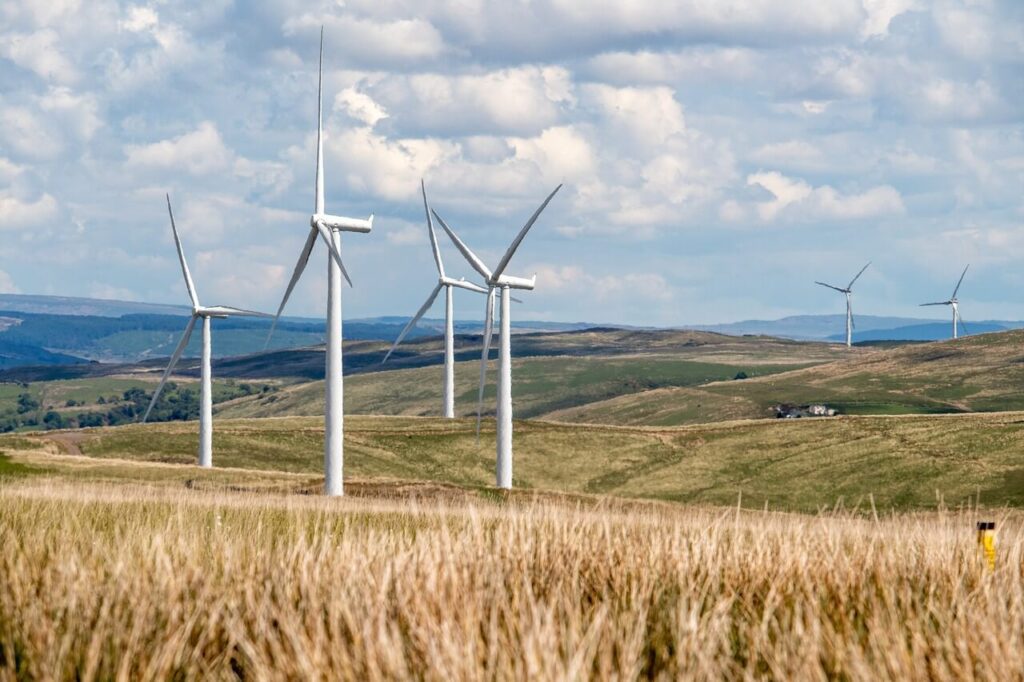
Wind energy is an important renewable energy source that generates power using wind turbines. Wind farms can provide clean energy solutions to address modern society’s increasing energy demands while simultaneously lowering greenhouse gas emissions.
Wind turbines use the kinetic energy of the wind to turn the blades, which produces electricity. Wind speed, blade design, and turbine height all have an impact on wind turbine efficiency.
Wind energy has the advantage of being scalable, which means it can be utilized for both small and large-scale renewable energy services. Wind farms might have a few turbines or hundreds, depending on the area and energy needs.
Wind farms, in addition to providing electricity, have been proven to provide environmental benefits such as lowering carbon emissions, creating jobs, and supporting sustainable energy alternatives.
Using Water to Your Advantage
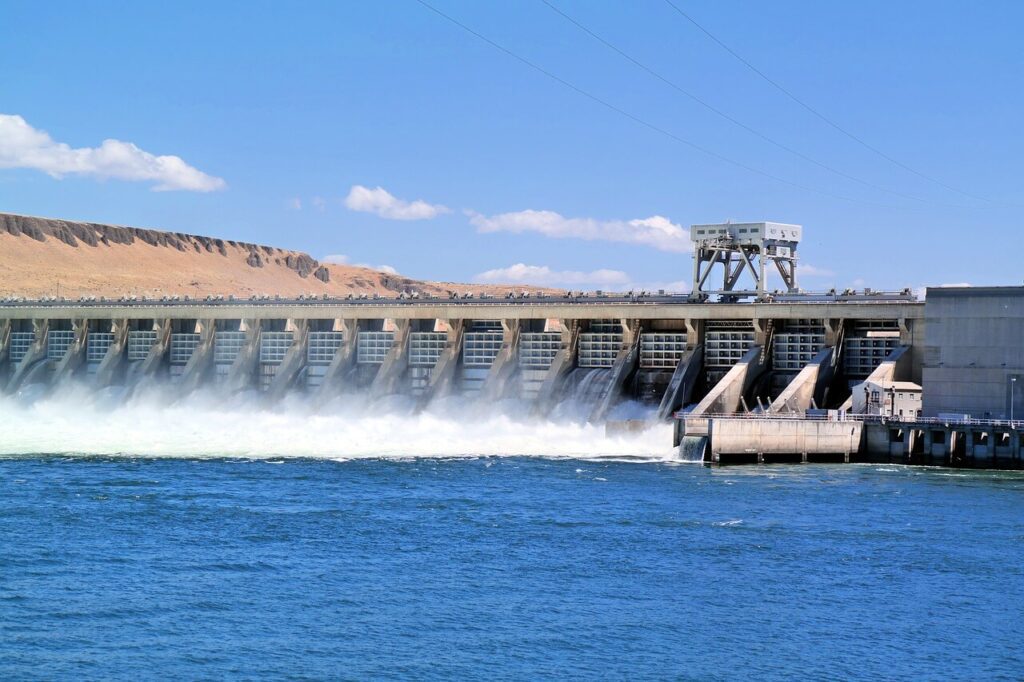
Hydroelectric power is a renewable energy source that uses the power of flowing water to generate electricity in an environmentally friendly manner. The energy produced can be used to power homes, companies, and even entire cities. Hydroelectricity is a popular alternative for renewable energy projects since it is clean, efficient, and reliable.
Hydroelectricity works by utilizing a dam to catch water and create a reservoir. The water then travels through a penstock, spinning a turbine, which drives a generator, generating electricity. Water turbines of many varieties, such as the Pelton, Francis, and Kaplan turbines, can be employed, each having its own set of strengths and applications.
The environmental benefits of hydroelectric power are one of its primary advantages. It is a clean energy source that emits no damaging greenhouse gases, making it a sustainable energy source. Hydroelectric power has a lower carbon footprint than fossil fuel-based power plants.
| Type of Water Turbine | Strengths | Applications |
|---|---|---|
| Pelton turbine | High efficiency, appropriate for high-head installations and low-flow circumstances, as well as low maintenance and dependability. | Power plants, whether small or huge, waterfalls, and mountainous terrain. |
| Francis turbine | The most commonly used turbine has great efficiency across a wide range of flow rates, a moderate head, and a flow rate of 0.5 m3/s. It can work with one or more horizontal axes. | Mid- to large-scale power plants, river systems with varied flow rates and heads, and hydrologically diverse locations. |
| Kaplan turbine | High efficiency at low head, greater flow rates, and ideal for low head, smaller reservoirs, and higher water velocities. | Large-scale power plants, rivers with low head and high volume, tidal currents, and marine applications. |
Hydroelectric power has been used for over a century and is still one of the most important sources of renewable energy in the world. The sector is still evolving, with new projects and technical improvements enhancing efficiency and cutting prices.
Exploiting Geothermal Energy
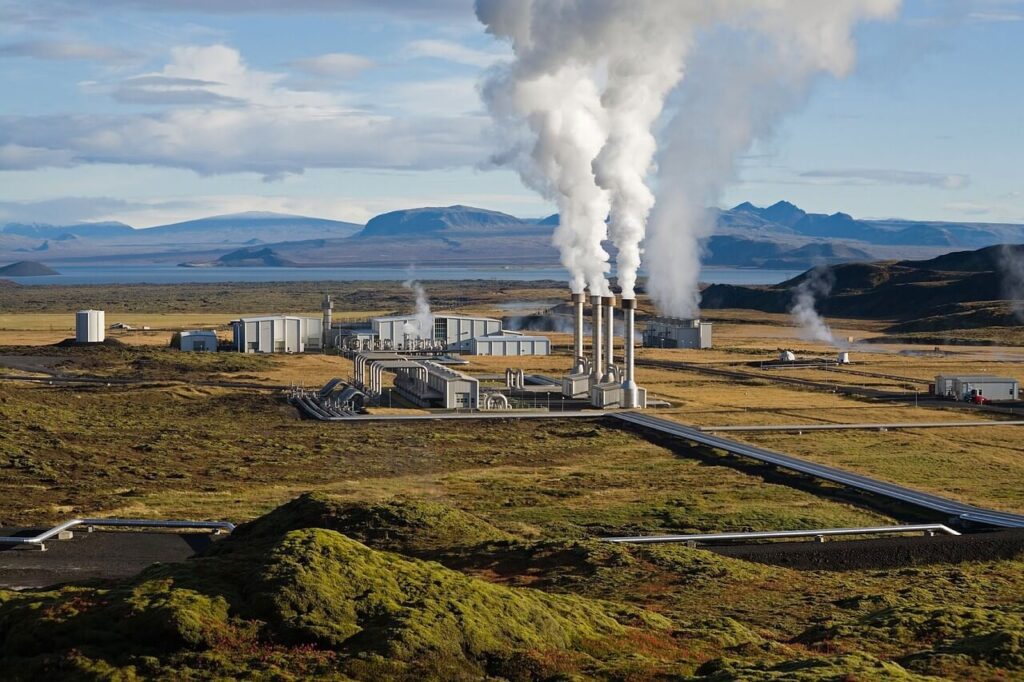
Geothermal energy is an intriguing renewable resource that generates power and provides heating and cooling solutions by utilizing the natural heat of the Earth. Geothermal energy, unlike other sources of renewable energy, can generate electricity 24 hours a day, seven days a week, making it a dependable and sustainable source of power.
Geothermal Power Plants
A geothermal power plant uses the natural heat of the Earth to generate electricity. Water is pumped into the Earth’s crust by the plant and heated by the high temperatures found beneath the surface. The heated water is then returned to the surface and utilized to power turbines, which produce energy.
Geothermal power plants can be located in areas where there is a lot of volcanic activity or where there is a lot of naturally produced underground heat. The Geysers in California and the Raft River plant in Idaho, for example, are both located in the United States.
Geothermal Heating and Cooling Systems
Geothermal energy can also be used to heat and cool buildings. A geothermal heat pump uses the earth’s constant temperature all year to produce heating and cooling. The mechanism absorbs heat from the earth to warm the air in the winter and sends it to the cooler ground in the summer.
Geothermal heating and cooling systems are extremely efficient, delivering up to four units of energy for every unit of electricity consumed. They can also save up to 70% on energy expenses when compared to typical heating and cooling systems.
Benefits of Using Geothermal Energy
Geothermal energy is an excellent source of sustainable and clean energy. It emits far fewer greenhouse gases than fossil fuels, making it a clean and environmentally beneficial option for power generation. Other benefits of using geothermal energy include:
- Reliability: Geothermal power plants can run continuously, providing a constant source of electricity.
- Cost-effectiveness: When compared to typical systems, geothermal heating and cooling systems can save up to 70% on energy expenditures.
- Longevity: Above-ground geothermal systems can last up to 25 years, while underground systems can last up to 50 years.
- Environmental advantages: Geothermal energy is a clean, sustainable resource that generates very little waste or pollution.
“Geothermal energy holds tremendous potential for powering our homes and businesses with sustainable, clean energy solutions.”
Exploring Bioenergy and Biomass

Bioenergy has emerged as a feasible option for generating sustainable power as the demand for renewable energy technology grows. Bioenergy provides a clean and renewable source of energy by exploiting organic matter such as agricultural waste and forestry residues.
The conversion of biomass into bioenergy is a relatively easy process.Burning biomass generates heat, which is subsequently used to power turbines that generate electricity. This is referred to as combustion. Because the ash that remains after burning is frequently used as fertilizer, bioenergy is a sustainable approach to managing waste.
One benefit of bioenergy is its adaptability. It can produce electricity, heat buildings, and even power cars. Because the carbon dioxide emitted during combustion is compensated by the carbon dioxide absorbed by plants during photosynthesis, bioenergy has the potential to reduce greenhouse gas emissions.
Bioenergy is a generally underutilized renewable energy source, yet its potential is enormous. With further technological and infrastructure developments, bioenergy has the potential to play a big role in our transition to cleaner, greener energy alternatives.
Benefits of Bioenergy and Biomass
| Benefit | Explanation |
|---|---|
| Renewable | Bioenergy uses abundant organic materials that can be continuously replenished, making it a sustainable energy source. |
| Versatile | Bioenergy has a wide range of applications, including power generation, space heating, and transportation. |
| Reduced Emissions | Bioenergy sources, because they are carbon-neutral, do not contribute to the greenhouse gases that cause climate change. |
| Waste Reduction | Biomass that would otherwise go to waste can be transformed into useful energy, eliminating the need for landfills and waste management. |
Overall, bioenergy and biomass have enormous potential as a clean, renewable energy source. We can lessen our dependency on fossil fuels and work toward a more sustainable future by using organic waste products to create power and heat.
Renewable Energy System Integration

The integration of renewable energy technologies into our current infrastructure is critical to the transition to clean energy. While it does create certain issues, it also provides numerous opportunities for both individual customers and the environment as a whole.
Challenges
The instability and unpredictability of renewable energy systems is one of the most difficult issues in integrating them. In comparison to traditional energy sources such as fossil fuels, renewable energy sources may be less reliable in terms of consistent generation. Furthermore, because renewable energy sources are frequently scattered and decentralized, connecting them to the existing power system can be problematic.
Another difficulty is the initial expense of installing renewable energy systems, which can be prohibitively expensive for certain individuals and businesses. It is crucial to remember, however, that the long-term financial benefits of renewable energy can more than balance the initial cost.
Opportunities
Despite the hurdles, incorporating renewable energy systems opens up a world of possibilities. Batteries and grid-scale storage, for example, can help balance the fluctuation of renewables and provide a more consistent source of power. Furthermore, because renewable energy systems are less reliant on finite resources and imported fuels, they can provide energy security and independence.
Renewable energy systems also provide substantial environmental advantages, such as lower greenhouse gas emissions, better air quality, and less reliance on nonrenewable resources. Renewable energy can also result in lower energy bills and higher property values for individual consumers.
| Benefits of Integrating Renewable Energy Systems | Challenges of Integrating Renewable Energy Systems |
|---|---|
| – Lower greenhouse gas emissions – Better air quality – Energy security and independence – Energy bill savings – Increased property prices | – Unpredictability in generation – Difficulty connecting scattered sources to the grid – Expensive initial outlay |
As we strive for a cleaner, greener future, incorporating renewable energy sources into our existing infrastructure is not only important but also required. We can work towards a more sustainable and resilient energy system for future generations by understanding the difficulties and opportunities that come with it.
Eco-Friendly Renewable Energy Solutions Guide: Conclusion
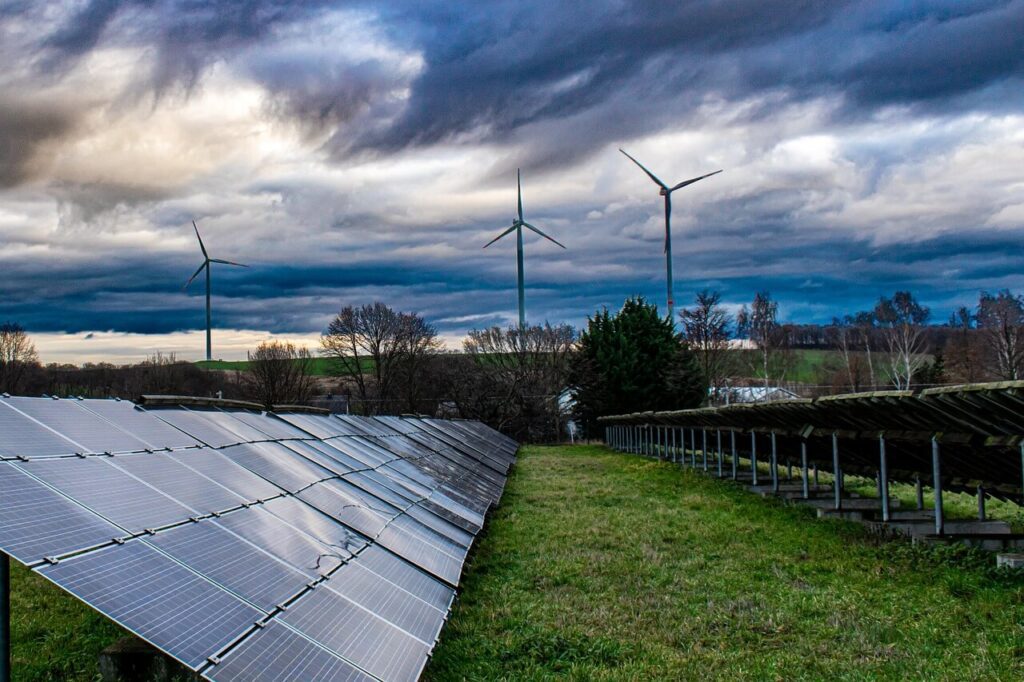
As we near the end of our exploration of renewable energy sources, it is clear that these green energy options hold enormous promise for a cleaner, greener future.
We can reduce our carbon footprint and mitigate the effects of climate change by embracing clean and green energy sources. Renewable energy sources have the potential to provide power while minimizing environmental impact and reducing our reliance on fossil fuels.
Through this tutorial, we learned about several renewable energy methods, such as solar power, wind energy, hydroelectric power, geothermal energy, and bioenergy. We’ve talked about how these technologies function, their advantages and applications, and their potential for a more sustainable energy future.
Integrating renewable energy technologies into our current infrastructure is critical to achieving a clean energy transition and a sustainable future. We investigated the problems and opportunities associated with integrating renewables into the grid, as well as energy storage options and the advantages to both individual consumers and the environment.
As we go forward, it is critical to remember that each of us has a responsibility to play in supporting sustainable energy alternatives. We can contribute to a more sustainable future by using clean and green energy sources such as solar panels, wind turbines, and geothermal systems.
By embracing renewable energy alternatives, we can take the first step toward a cleaner and greener future. We can have a beneficial impact on the environment and pave the road for a more sustainable world if we work together.
FAQ About Eco-Friendly Renewable Energy Solutions
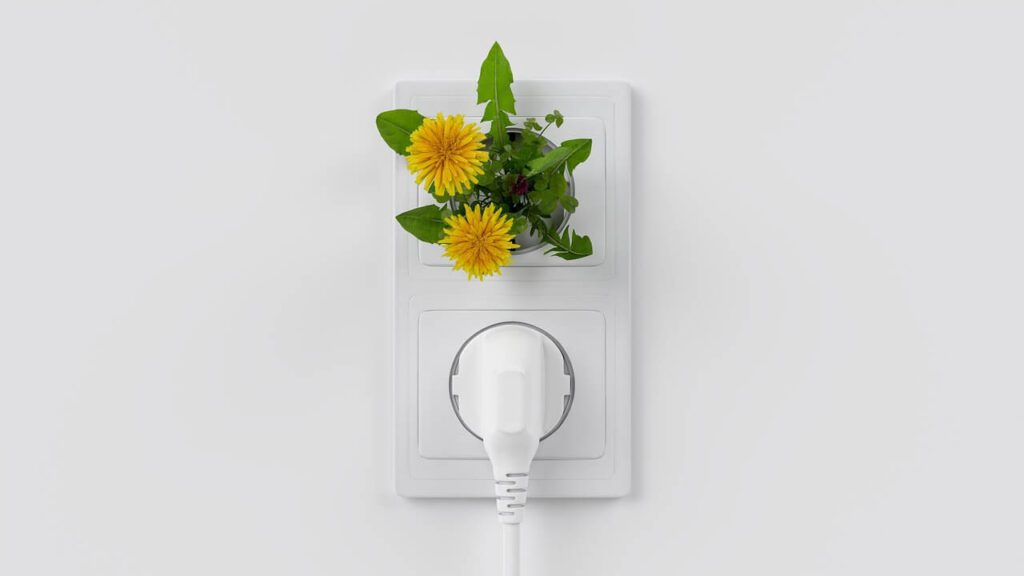
What are the renewable energy solutions?
Renewable energy solutions are technologies and systems that use naturally replenishing resources like sunshine, wind, water, and geothermal heat to generate clean and sustainable energy. These ideas seek to lessen dependency on fossil fuels while also reducing the environmental impact of traditional energy sources.
Why are sustainable energy solutions important?
Sustainable energy solutions are critical for a variety of reasons. For starters, they aid in the fight against climate change by lowering greenhouse gas emissions and minimizing environmental harm. Furthermore, these solutions encourage energy independence, minimize air pollution, and open up new business prospects in the renewable energy sector.
What are some examples of clean energy solutions?
Solar power, wind energy, hydroelectric power, geothermal energy, and bioenergy are all examples of renewable energy solutions. Each of these solutions provides a unique technique to producing power or heat without relying on finite fossil fuel supplies.
How do renewable energy technologies work?
Renewable energy solutions function by capturing and turning natural resources into useful energy. Solar panels, for example, absorb sunlight and turn it into electricity, whereas wind turbines capture wind kinetic energy and convert it into power. These technologies harness the inherent energy in renewable resources to produce clean, long-lasting electricity.
Are renewable energy systems reliable?
Renewable energy technologies are getting more dependable and efficient. Many of the issues connected with intermittency and variability have been overcome by advances in technology and infrastructure. Furthermore, the diversification of renewable energy sources, as well as the incorporation of energy storage solutions, has increased the reliability and stability of renewable energy systems.
How can I benefit from renewable energy projects?
Individuals can benefit from renewable energy projects in a variety of ways. Installing solar panels or wind turbines on your property can help you generate sustainable energy, decreasing your reliance on the grid and potentially cutting your energy expenses. Furthermore, investment in renewable energy projects can provide financial gains while also contributing to a more sustainable future.
Are there renewable energy services available?
Yes, a variety of renewable energy services are available to help with the adoption and implementation of sustainable energy solutions. These services may include renewable energy system consultation, installation, maintenance, and monitoring. Furthermore, renewable energy service providers frequently provide information on incentives, legislation, and funding choices for renewable energy projects.
What are the options for renewable energy storage?
Renewable energy storage is critical for balancing supply and demand and providing a steady power supply. Lithium-ion batteries, pumped hydro storage, and flywheels are examples of common storage systems. During periods of strong output, these systems store extra renewable energy and release it when demand is high or renewable resources are low.





